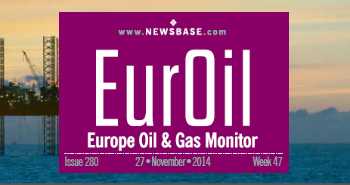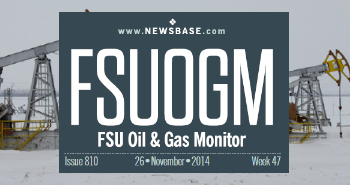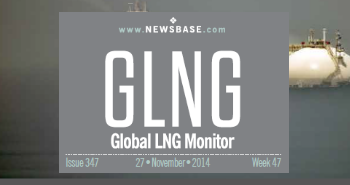EU may stall Russian energy phase-out amid high prices, fear of overreliance on US LNG
_Cropped.jpg)
The EU may fear the Trump administration could weaponise gas supply just as the Kremlin has.
WHAT: European officials are reconsidering plans to phase out Russian gas as energy prices surge and concerns grow over growing dependence on US LNG supplies, according to Germany’s Der Spiegel magazine.
WHY: Strained EU-US relations, high gas prices, and fears of substituting one geopolitical dependency for another are prompting some member states and industrial lobbies to quietly advocate for resuming or maintaining Russian imports.
WHAT NEXT: While political opposition remains strong in countries like Germany and Poland, lobbying efforts and peace talks around Ukraine could open the door to partial restoration of Russian gas flows, particularly via Ukraine or the remaining Nord Stream 2 string.
European officials are reassessing the possibility of increasing Russian gas imports amid escalating tensions with the United States, Der Spiegel reported on April 1, citing growing concern in Brussels over the bloc’s rising dependence on US LNG. According to the magazine, these concerns have prompted EU authorities to delay publishing a roadmap to fully phase out Russian energy supplies by 2027.
Natural gas prices in Europe jumped by more than 50% year on year in the first quarter of 2024, reaching nearly $500 per 1,000 cubic metres, based on data from the London-based ICE exchange. The expiry of the Russian gas transit agreement with Ukraine has tightened the EU’s supply outlook, while demand remained strong due to an unseasonably cold end to winter and weak wind power generation.
Hungary and Slovakia, which previously received Russian gas via Ukraine, have lobbied Brussels to press Kyiv to reinstate transit flows, although their efforts have so far yielded no result. Meanwhile, Russian Foreign Minister Sergei Lavrov stated last week that the potential restoration of the Nord Stream pipelines had been discussed during talks between Moscow and Washington concerning a possible peace agreement in Ukraine.
Three of the four Nord Stream 1 and 2 pipeline strings were damaged by sabotage in September 2022, leaving just one intact string capable of transporting gas, with an annual capacity of 27.5bn cubic metres. However, as recently as early March, the German government reiterated its refusal to accept gas via this remaining line, reaffirming its policy to phase out all Russian energy imports.
The Yamal-Europe pipeline, which delivers gas to Germany through Belarus and Poland, also remains offline due to sanctions and counter-sanctions imposed by the Polish and Russian governments. This leaves TurkStream – transporting Russian gas via Turkey and the Black Sea into Southeast Europe – as the sole functioning route for Russian pipeline gas to reach the EU.
How much Russian gas could return?
An increase in Russian gas supply to the EU remains a plausible scenario, according to Alexei Grivach, Deputy Director General at the National Energy Security Fund. Speaking to Kommersant, he said: “Part of the European establishment and business community is clearly interested in raising gas supply volumes to stabilise the market and lower prices both in the short and long term, especially as efforts continue to find a framework for peace in Ukraine. This is beginning to surface in media discussions and, most likely, through informal diplomatic channels as well.”
The new European Commission has vowed to try to re-industrialise the bloc, undoing some of the damage caused by more than three years of elevated energy prices. But the high price of gas, as a result of tight supply, undermines this objective, given the key role that gas plays both as a stable source of heat and power supply and as feedstock in chemical industries, particularly in Germany.
Russian gas accounted for just 10% of EU imports last year, down from 140 bcm in 2021. In 2023, total volumes stood at more than 32 bcm, with Hungary and Slovakia among the largest remaining buyers. Alexey Belogoryev, Director of Research and Development at the Institute of Energy and Finance, told Kommersant he believes these countries will continue pushing for increased flows.
“The immediate priority would be at least a partial restoration of Ukrainian transit to Slovakia, Austria and Hungary, as these three countries are likely to insist on it,” he said. “The larger question is whether, when, and how much gas would flow to Germany – where it could then be redistributed to other parts of north-western Europe.”
Belogoryev added that even in the most optimistic scenario of improved relations, supply would likely only recover to 50-60 bcm annually. “I don’t see scope for more, simply because the market has changed and shrunk. The overarching policy is to curb gas demand rather than increase it. Moreover, Europe has significantly boosted pipeline imports from Norway and Azerbaijan, and LNG now dominates.”
Stanislav Mitrakhovich, senior research fellow at the Financial University under the Government of the Russian Federation, also cast doubt on the potential for a substantial recovery in Russian pipeline gas exports. “It's difficult to imagine governments in Poland or Germany openly resuming business with Russia or returning seized assets,” he told Kommersant.
Poland nationalised Gazprom’s stake in Europol GAZ – the operator of the Yamal-Europe pipeline – in 2022. Restarting the pipeline would require a political agreement between Poland and Russia, Mitrakhovich noted.
He added that the undamaged string of Nord Stream 2 remained another theoretical option but would require certification by German regulators. However, political parties likely to form Germany’s next governing coalition remain firmly opposed. “Much of the noise in the European press comes from segments of the industrial lobby and their political allies,” he said.
In late February, several major industrial companies in eastern Germany reportedly began exploring the potential to resume substantial Russian gas imports, according to Bloomberg. The talks coincided with renewed diplomatic efforts to broker a peace settlement in Ukraine.
Another possibility is the resumption of Russian gas flows through Ukraine. However, Kyiv has repeatedly stated its opposition to this, and while Russia had supported continued transit before the contract expired, it has not publicly reaffirmed that position in 2025.
One dependency for another
Even if the EU does not raise Russian gas imports above current levels, it may opt to maintain the status quo – including 32 bcm of pipeline gas and roughly 24 bcm of LNG in 2024 – to avoid becoming overly reliant on US LNG.
Although Norway remains Europe’s largest gas supplier, it has never linked its energy exports to political demands. The same cannot be said for the US, which is in second place. US President Donald Trump had demanded that the EU buy more US LNG or face tariffs. Despite those demands, the US is now preparing to impose tariffs anyway on April 2. Looking ahead, the US could potentially leverage its LNG exports for political pressure, much like Russia has done over the past three years.
In this context, EU policymakers may be reluctant to replace one strategic vulnerability with another. The US is already Europe’s second-largest gas supplier after Norway, exporting 42.8mn tonnes of LNG to the continent in 2024 – equivalent to around 59 bcm of natural gas – exceeding the EU’s total imports of Russian gas in both pipeline and LNG form.




Follow us online